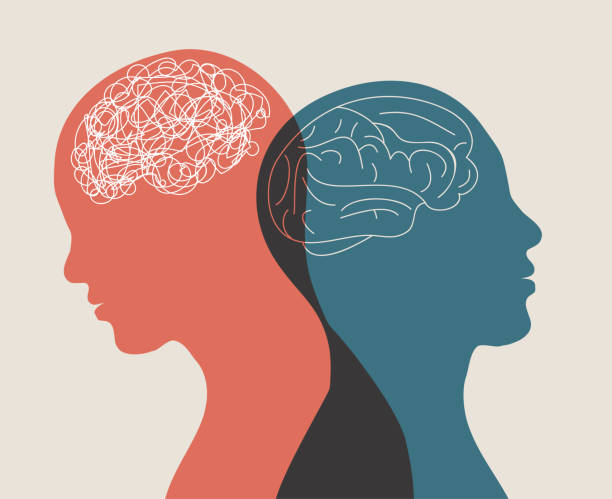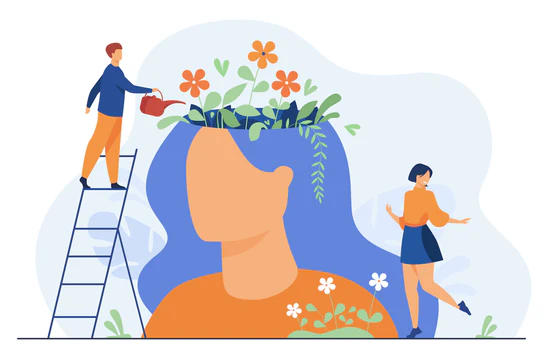Introduction
In recent decades, Western societies have increasingly emphasized personal autonomy, independence, and self-reliance. While these values support individual rights and achievements, their extreme form—hyperindividualism—has been linked to a growing public health concern: the loneliness epidemic (Murthy, 2020).
What is Hyperindividualism?
Individualism emphasizes the self as the central unit of society, encouraging personal goals, freedom, and self-expression (Triandis, 1995). Hyperindividualism takes this further, framing nearly all decisions through the lens of personal fulfillment, even at the expense of social cohesion (Henrich, 2020).

This orientation is reflected in several societal changes:
- Decline of extended family structures and neighborhood ties.
- Emphasis on career identity and self-optimization (Cacioppo & Patrick, 2008).
- Reliance on digital platforms for connection, which may offer breadth but not depth in relationships (Turkle, 2011).
The Rise of Solitary Living
Solitary lifestyles have become more prevalent in the West. In the United States, more than 28% of households are single-person homes (U.S. Census Bureau, 2023). These trends reflect both socioeconomic realities and cultural ideals that valorize self-sufficiency.
Historically, humans lived in interdependent family and tribal units. Philosopher Byung-Chul Han (2017) suggests that contemporary society replaces these bonds with a “burnout culture” of self-improvement and overwork, leading to disconnection masked by performative independence.
Read More- Loneliness and AI
Loneliness as a Public Health Crisis
Former U.S. Surgeon General Vivek Murthy (2020) declared loneliness a “public health crisis,” noting its association with depression, heart disease, cognitive decline, and early death. Prolonged loneliness is as harmful as smoking 15 cigarettes a day (Holt-Lunstad et al., 2015).
Western societies exhibit increasing rates of loneliness, particularly among middle-aged and older adults (Victor & Yang, 2012). The UK has even appointed a Minister for Loneliness, highlighting the scale of the issue (Office for National Statistics [ONS], 2018).
Individualism vs. Collectivism
Cultural psychology explores how cultural contexts shape behavior and psychological processes (Heine, 2012). It distinguishes individualist cultures, which prioritize independence, from collectivist cultures, which emphasize interdependence and social harmony (Hofstede, 2001; Markus & Kitayama, 1991).

Empirical Evidence
- Gene–Culture Interaction- Chiao and Blizinsky (2010) found that people with the SERT short allele—a gene variant linked to depression—were less likely to develop depression in collectivist cultures than in individualist ones. East Asians, who have a high frequency of this allele, showed lower depression rates, likely due to robust social support systems.
- Cross-National Studies- Heu et al. (2019) found that collectivism correlated negatively with loneliness in a study across five European countries. The more collectivist the cultural orientation, the lower the reported loneliness levels—even when social networks were small.
The Paradox of Collectivist Cultures
Collectivism is not a universal antidote. In cultures where conformity and emotional restraint are valued, individuals may feel isolated if they deviate from group norms (Kim et al., 2006). Moreover, some collectivist societies maintain rigid family expectations, which can alienate individuals who are unmarried, childless, or otherwise nonconforming (Fung et al., 2001).
Still, the general trend shows that collectivism buffers against loneliness through social embeddedness and emotional interdependence (Markus & Kitayama, 1991).
Hyperindividualism and Mechanisms of Loneliness
Some of the ways that loneliness percolates includes-
1. Weakened Social Capital
People in individualist societies are less likely to engage in communal activities or volunteerism, reducing shared purpose and civic trust (Putnam, 2000).
2. Self-Blame
Failures are often internalized. Without a community safety net, individual setbacks are seen as personal inadequacies (Cacioppo & Patrick, 2008).
3. Digital Substitutes
Social media may offer a facade of connection but lacks the depth needed to prevent loneliness (Turkle, 2011).
4. Therapy Culture
While mental health support is important, excessive focus on “healing the self” can obscure systemic causes of distress (Illouz, 2008).
Societal Consequences of Loneliness
Chronic loneliness does not only affect individuals—it impacts entire societies. Lonely individuals are more prone to:
- Poor physical health and sleep disturbances (Hawkley & Cacioppo, 2010).
- Political radicalization, due to feelings of alienation (Fukuyama, 2018).
- Economic costs, as loneliness increases medical expenditures and reduces productivity (Holt-Lunstad et al., 2015).
Toward Cultural Balance
Rather than idealizing either individualism or collectivism, a balanced cultural approach is ideal.
Policy Recommendations:
- Urban Design: Encourage shared spaces like parks and community centers.
- Community Programs: Support volunteering, mentorship, and intergenerational programs.
- Education: Teach emotional intelligence and civic responsibility.
- Digital Literacy: Promote intentional social media use.
Conclusion
Hyperindividualism, while empowering in some domains, exacerbates loneliness by fragmenting social life and glorifying self-sufficiency. Cultural psychology offers vital insights into how collectivist societies can offer buffers against this disconnection. Moving forward, societies must strive for a culture that values both personal freedom and deep human connection.
References
Byung-Chul Han. (2017). The burnout society. Stanford University Press.
Cacioppo, J. T., & Patrick, W. (2008). Loneliness: Human nature and the need for social connection. W.W. Norton & Company.
Chiao, J. Y., & Blizinsky, K. D. (2010). Culture–gene coevolution of individualism–collectivism and the serotonin transporter gene. Proceedings of the Royal Society B: Biological Sciences, 277(1681), 529–537. https://doi.org/10.1098/rspb.2009.1650
Fukuyama, F. (2018). Identity: The demand for dignity and the politics of resentment. Farrar, Straus and Giroux.
Fung, H. H., Li, T., & Lai, P. (2001). Age differences in social preferences among Taiwanese and mainland Chinese: The role of perceived controllability. Psychology and Aging, 16(2), 351–356.
Heine, S. J. (2012). Cultural psychology (2nd ed.). W.W. Norton & Company.
Heu, L. C., van Zomeren, M., & Hansen, N. (2019). Lonely alone or lonely together? A cultural-psychological examination of individualism–collectivism and loneliness in five European countries. Personality and Social Psychology Bulletin, 45(5), 780–793. https://doi.org/10.1177/0146167218796793
Henrich, J. (2020). The WEIRDest people in the world: How the West became psychologically peculiar and particularly prosperous. Farrar, Straus and Giroux.
Hofstede, G. (2001). Culture’s consequences: Comparing values, behaviors, institutions and organizations across nations (2nd ed.). SAGE Publications.
Holt-Lunstad, J., Smith, T. B., Baker, M., Harris, T., & Stephenson, D. (2015). Loneliness and social isolation as risk factors for mortality: A meta-analytic review. Perspectives on Psychological Science, 10(2), 227–237. https://doi.org/10.1177/1745691614568352
Illouz, E. (2008). Saving the modern soul: Therapy, emotions, and the culture of self-help. University of California Press.
Kim, H. S., Sherman, D. K., & Taylor, S. E. (2006). Culture and social support. American Psychologist, 61(6), 521–532.
Markus, H. R., & Kitayama, S. (1991). Culture and the self: Implications for cognition, emotion, and motivation. Psychological Review, 98(2), 224–253.
Murthy, V. H. (2020). Together: The healing power of human connection in a sometimes lonely world. Harper Wave.
Office for National Statistics. (2018). Loneliness – What characteristics and circumstances are associated with feeling lonely? Retrieved from https://www.ons.gov.uk/
Putnam, R. D. (2000). Bowling alone: The collapse and revival of American community. Simon & Schuster.
Triandis, H. C. (1995). Individualism and collectivism. Westview Press.
Turkle, S. (2011). Alone together: Why we expect more from technology and less from each other. Basic Books.
U.S. Census Bureau. (2023). America’s families and living arrangements. https://www.census.gov/data/
Victor, C. R., & Yang, K. (2012). The prevalence of loneliness among adults: A case study of the United Kingdom. The Journal of Psychology, 146(1–2), 85–104.
Subscribe to PsychUniverse
Get the latest updates and insights.
Join 2,995 other subscribers!
Niwlikar, B. A. (2025, June 21). What is Hyperindividualism and 4 Important Mechanisms of It. PsychUniverse. https://psychuniverse.com/hyperindividualism/



